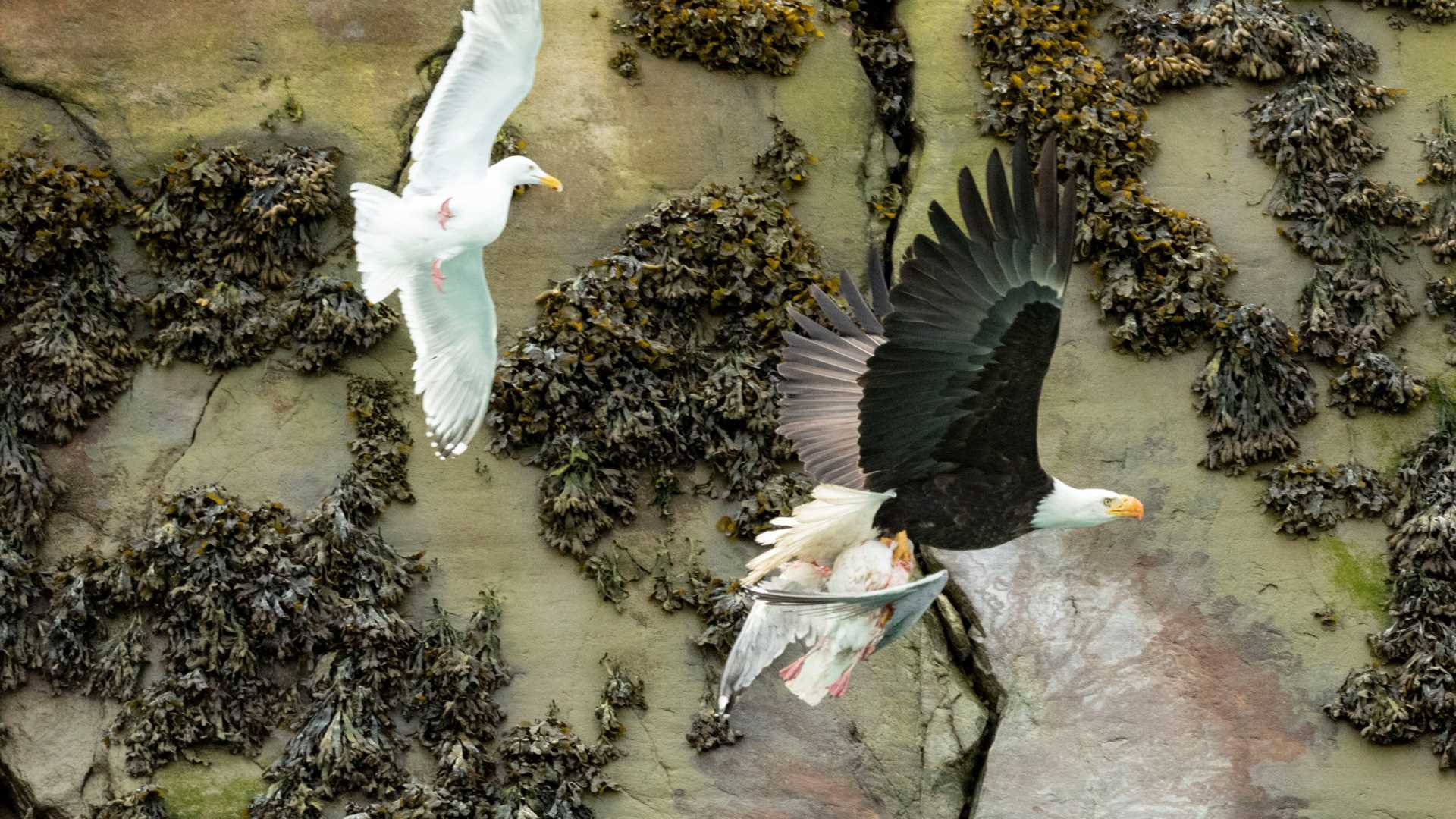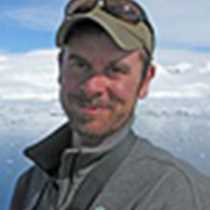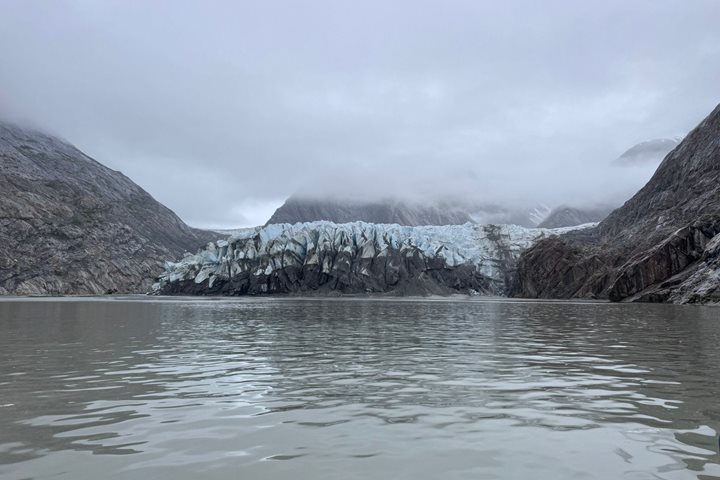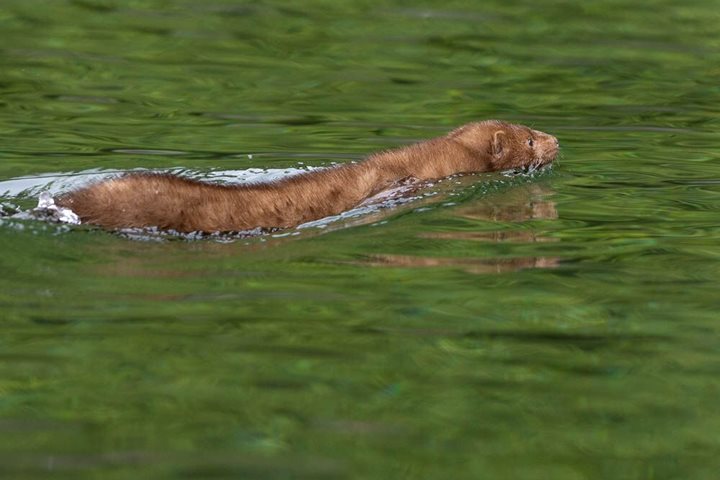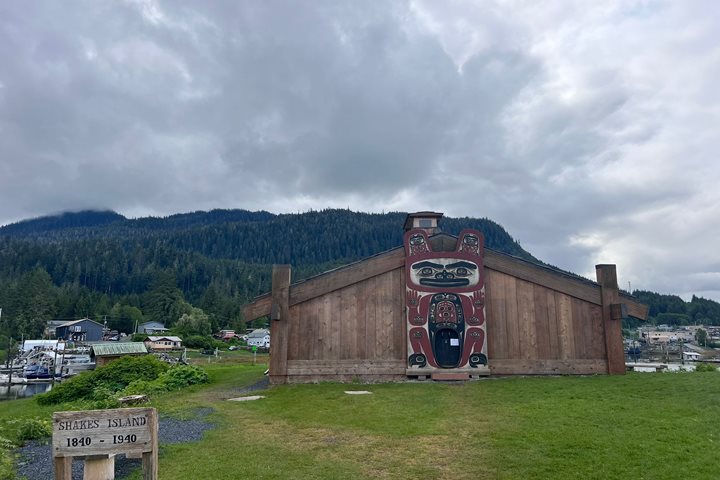Alaska can be soft green moss in the mist, slow, peaceful, and still. It can also be thunder, shrapnel, and sudden violence. At the head of the fjord, and the terminus of the Dawes Glacier, we watched as seracs came crashing down into the water, sending shards of ice hundreds of meters away. Gulls and terns danced along the surface, picking off small forage fish churned up in the chaos and outflow.
Tidewater glaciers in Southeast Alaska are a surprising collection of life. As these ice rivers travel down toward the sea, they deliver a cold, sediment-rich pulse of nutrients, like iron and silica, that fuel phytoplankton blooms. These blooms form the base of the food chain and attract zooplankton and crustaceans, which in turn attract small fish, birds, and seals. The nutrient pulses from these glaciers fuel not only the abundance of life found within the fjords but also flow out to sea and support the entire marine ecosystem of Southeast Alaska. The calvings we see as spectacular displays of mother nature are far more complex and important to the overall ecosystem, perhaps making it more beautiful and breathtaking in the understanding.

